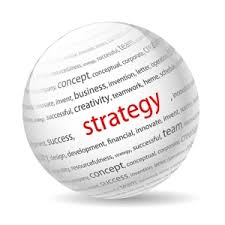Buying
items and services is a necessary evil of doing business, its operational
costs. Smaller sized businesses tend not to pay too much attention to detail
and it’s a costly mistake to make when it comes to growth.
The
larger your company becomes, the more you need to buy in. That’s not just for
raw materials for a production process either. Even hiring staff will
eventually take a team of HR personnel to recruit the right talent to the right
position. PR staff is needed to target media campaigns to get new customers
through your doors and paying for your products and services.
The
more your company grows, the more you’re going to need to spend.
For
that reason, the best time to optimise your expenditure is before you expand.
Having a clearly defined procurement procedure and policy in place is the
ultimate way to gaining a huge competitive advantage.
Applying the two out of three process to procurement
When
you’re at the beginning of a buying stage for any business supplies, there are
only three words you need to remember.
1) Fast
2) Good
3) Cheap
In
a perfect world, you’d have all three of the above from a supplier. Thing is
though… it’s not an ideal world so you can only have two. Pick.
·
Fast and good
·
Good and cheap
·
Cheap and fast
But
never fast, good and cheap.
To
strike the right combination, there are a couple of things you need to do. The
first is to be exquisitely clear in your objectives.
If
you’re renewing a print contract, why do you want to change supplier? Is it due
to poor customer service? If that’s the scenario, then perhaps fast and good would
be a good option to aim for. If on the other hand you were to be sourcing
stationery for the office, cheap and good quality products may be a good
combination.
The
trick to effective sourcing is prioritising your needs. Basing it on the level
of service you need. Do you need it fast? If so, expect it not to be cheap.
Time is money after all and if you’re in a rush to get supplies, suppliers will
be in a rush to add a mark-up for the speed of delivery.
Even
the Royal Mail won’t give you a next day delivery service without insisting on
a premium. They’re in the fast and good category. Cheap, it’s not if you want
it fast. If you want cheap, it’s second class postage which will be good and
cheap, with the sacrifice of fast.
So
ask yourself what you need. A fast service, good quality, or is price the
deciding factor?
Once
you can honestly answer that, then you move onto the next question of where do
you get what you need? This is the investigative stage and it’s where you’re
identifying potential suppliers.
What makes a supplier considerable?
You
can break this down into a five step process…
1) Set a well-defined
criteria that potential suppliers must meet
This
could be things like the supplier must be:
a) Local
b) Have
a stringent quality control process
c)
Have a reasonable minimum
order quantity
d) Reasonable
payment terms and conditions of service
e) A
clear returns or guarantee policy
f)
Have verifiable references
What
you’ll find at the early stage of buying any B2B service is there are a lot
more suppliers than you initially thought.
2) Define the process you’ll
use
When
you have your potential suppliers lined up, you need a process and a time scale
for assessing suppliers against your criteria. At this stage you should also be
thinking about the method of outreach. Will a trade publication be sufficient
in letting suppliers know what you need, or will you have someone appointed
from within your company to put RFPs (requests for proposals) out to potential
suppliers?
3) Ask for the bids to be
submitted
The
full details of the products you need or the services you need supplied to your
business needs to be clearly stated in a written document so that suppliers can
get a full understanding of what you require them to do. Clarity at this stage
is crucial for getting a correct quotation and the negotiations set off on the
right foot.
4) Evaluate each submission
received to select a partner and negotiate terms
Evaluation
can only be done when all the bids have been submitted. For this reason, in
your briefing to suppliers, give them a reasonable deadline to have their
proposals submitted for consideration. Once that deadline is reached, evaluate
your responses to narrow the selection process and decide which supplier best
meets the criteria you set at the beginning stage. Any supplier submitting a
bid past the deadline should probably be dropped from the process as they’ll
have missed a deadline before you start working together. Start the way you
mean to go on.
5) Monitor the supplier
continuously
Even
the best suppliers will have a hiccup here and there when something goes wrong
therefore plan for that to happen by assigning someone as a named contact to
oversee the contract. They’ll be responsible for performance reviews ensuring
the supply provision is overseen and also for managing the relationship with
any key person involved in the service provision.
In
our experience, rapport has been essential to long-lasting relationships with
suppliers, making it easy to sustain a healthy working relationship that
benefits both businesses while making the renegotiating stages flow much
smoother and more beneficial.
Ultimately,
the better the preparation is in the early stages of the buying process, the
better clarity there is, resulting in clear communication with much less
misunderstandings.
Image courtesy of krostewitz.com.










